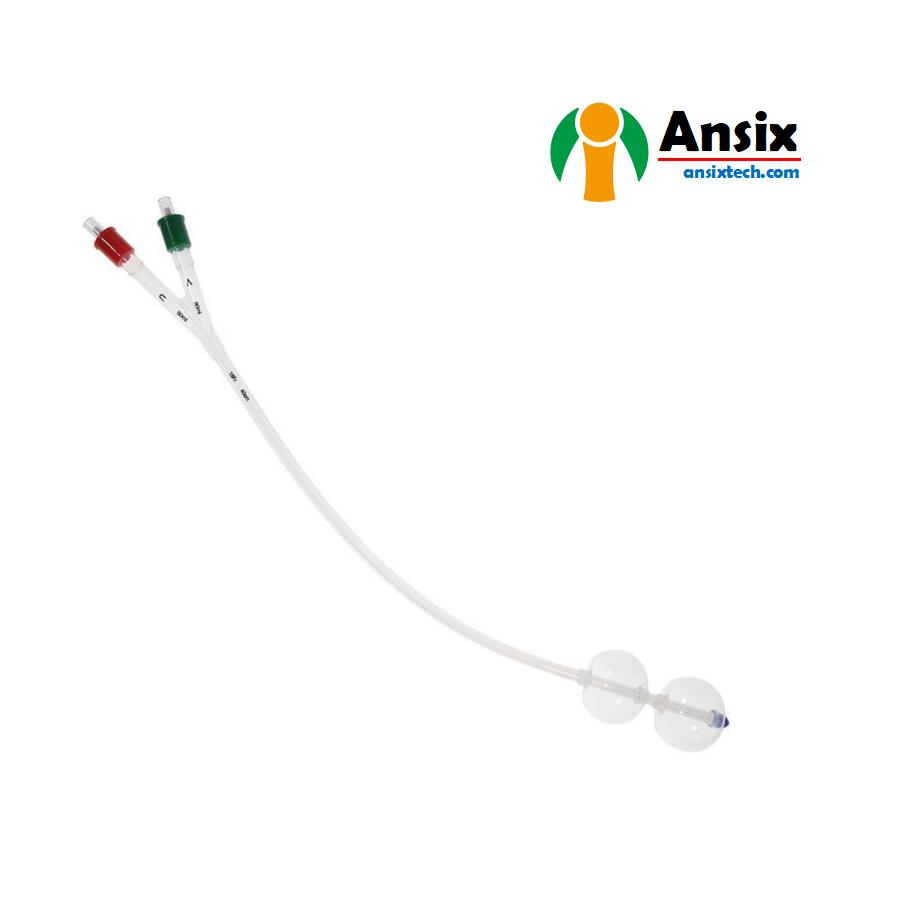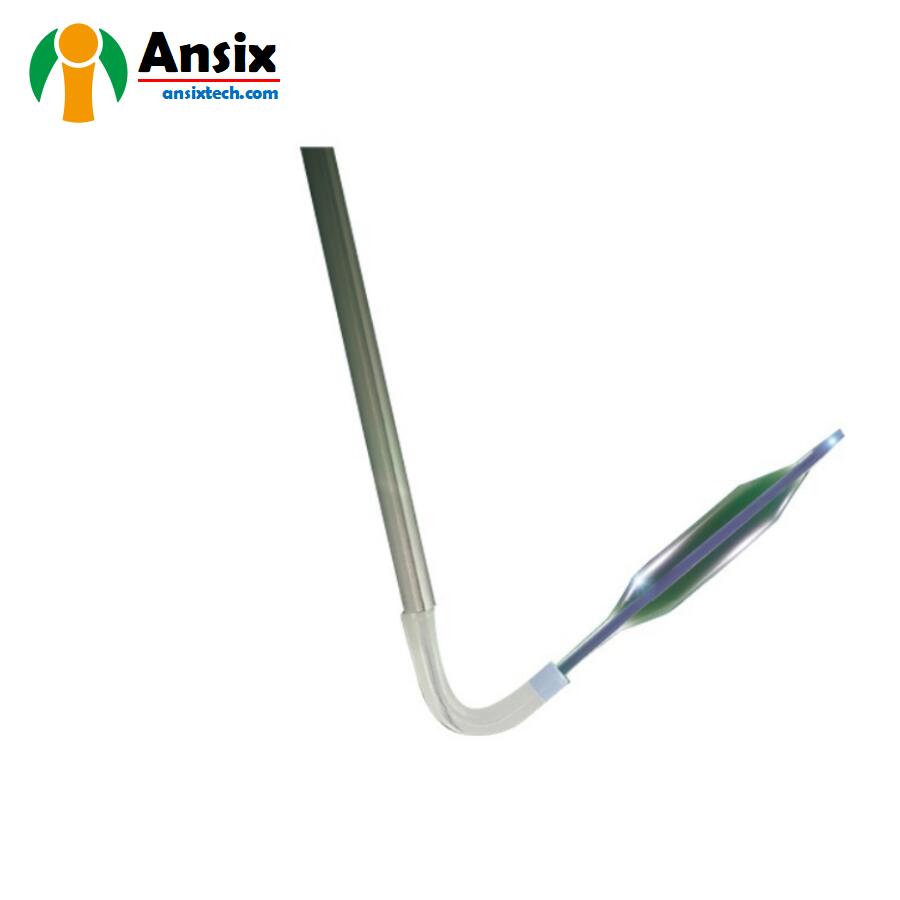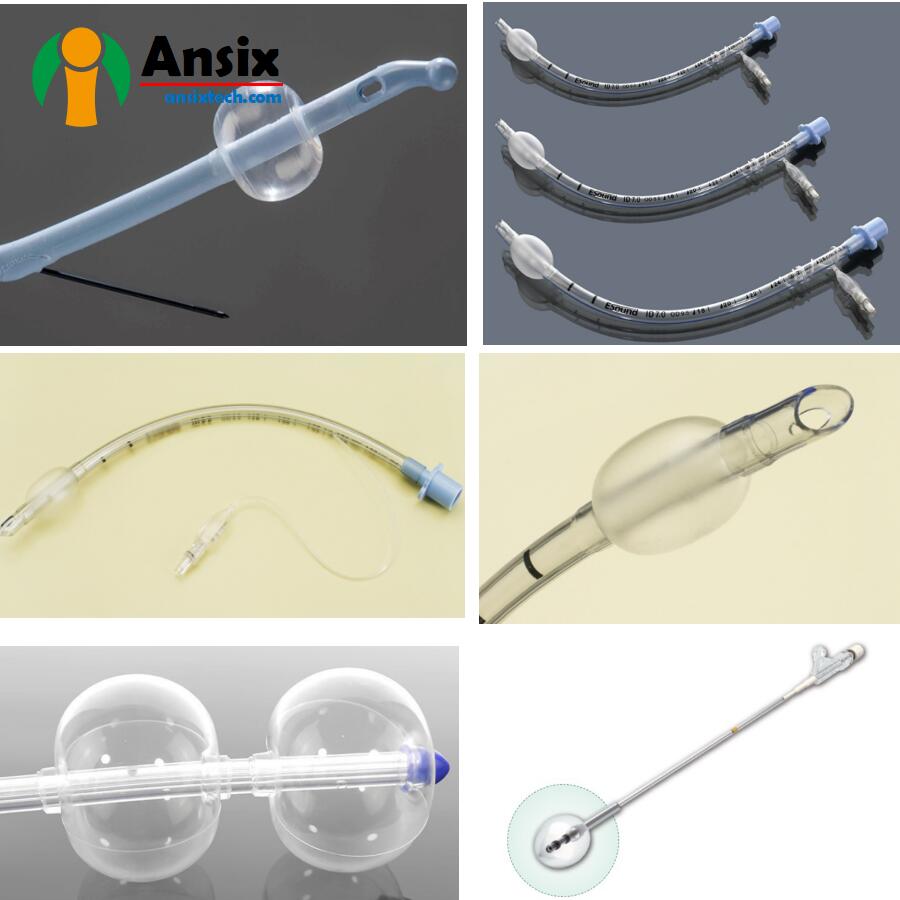Medical Balloon Catheters for AnsixTech
FEATURES
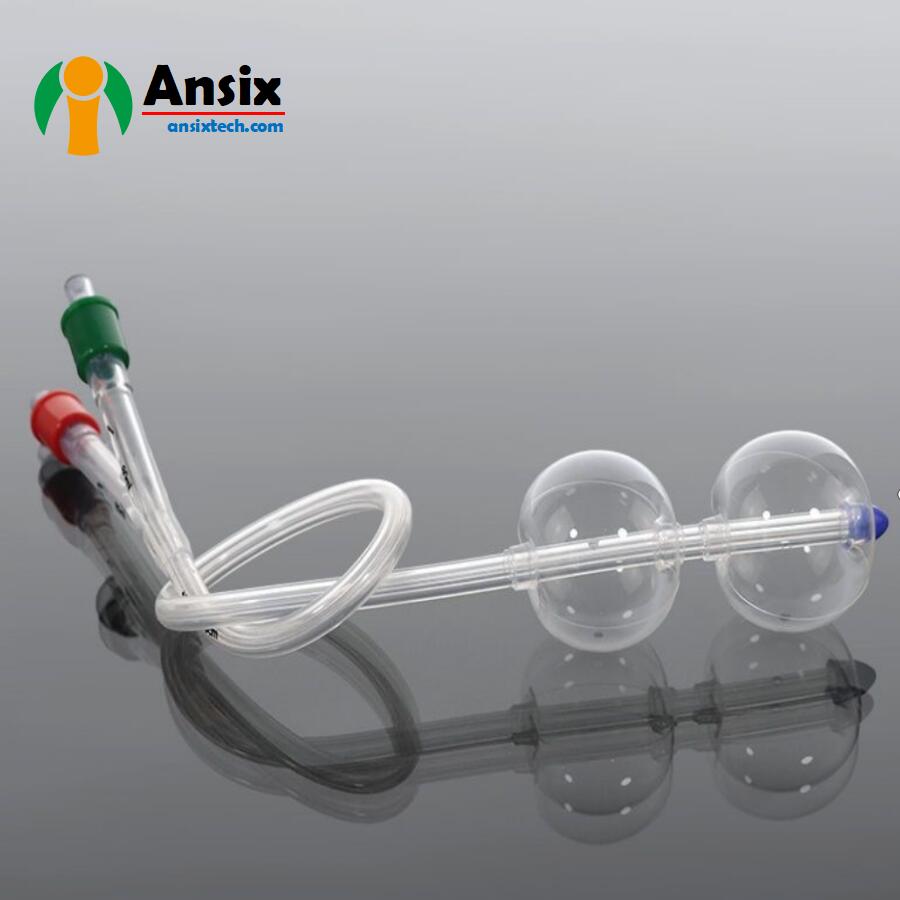
- Medical Balloon Catheters for AnsixTech
Bleeding control: Balloon catheters can be used to stop bleeding and block bleeding points. By guiding a balloon catheter near the bleeding point and then inflating the balloon, bleeding can be effectively controlled.Biliary and pancreatic drainage: Balloon catheters can also be used for biliary and pancreatic drainage. By introducing a balloon catheter into the biliary or pancreatic duct and then inflating the balloon, the drainage channel can be opened.In general, medical balloon catheters have expansion, bending and navigation functions and can be used in interventional surgeries and treatments such as blood vessel dilation, stent implantation, hemostasis, bleeding control, and biliary and pancreatic drainage. It is a commonly used medical device that can help doctors achieve precise operations and treatments.
- Medical Balloon Components & Technologies
Medical balloon catheters usually consist of the following components:Catheter body: The main part of the medical balloon catheter is usually made of soft materials, such as polyurethane, silicone, etc. The catheter body is strong and flexible enough to facilitate navigation and positioning in blood vessels or organs.Balloon: The balloon is a key component of the medical balloon catheter and is usually made of elastic materials, such as polyethylene, polyurethane, etc. The balloon can be inflated by injecting liquid or gas to dilate blood vessels, stop bleeding, and block bleeding points.Connector: The connector is used to connect the catheter body and the balloon, and usually has a standard interface to connect to a syringe or other equipment.Guide Wire: The guide wire is a long, thin guide wire used to guide and navigate the balloon catheter through the blood vessels. The guide wire usually has good bending and guidance so that the doctor can accurately guide the balloon catheter to the target location.Controller: The controller is used to control the inflation and deflation of the balloon catheter. The controller usually has a device such as a syringe or valve so that the doctor can precisely control the inflation and deflation of the balloon.Medical balloon catheter technologies include:Guide technology: Doctors use guide wires to introduce the balloon catheter into blood vessels or organs. A guide wire is usually introduced first, and then the balloon catheter is advanced along the guide wire to the target location.Inflation technology: Once the balloon catheter reaches the target location, the doctor can inject liquid or gas through the controller to inflate the balloon. The expansion of the balloon can dilate blood vessels, stop bleeding, block bleeding points, etc.Deflation technology: After completing the required treatment, the doctor can deflate the balloon through the controller to shrink or completely deflate it, and then remove the balloon catheter from the body.Monitoring technology: During the use of balloon catheters, doctors usually use imaging or monitoring equipment to observe the position and expansion of the balloon in real time to ensure accurate operation and treatment.These components and technologies make medical balloon catheters an effective interventional procedure and treatment tool that can help doctors achieve precise operations and treatments. Specific components and techniques should be determined based on physician needs and equipment availability. 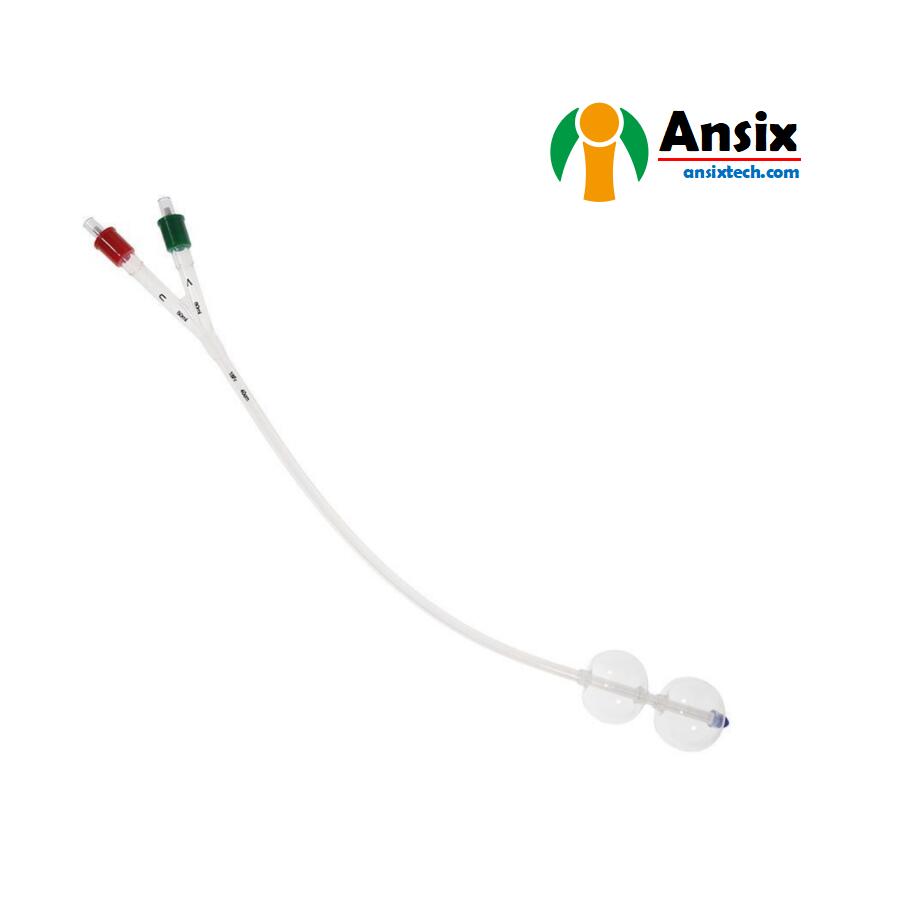
- Materials of Medical Balloon
The components of medical balloon catheters are usually made of a variety of materials. Here are some common component materials:Catheter body: The catheter body is usually made of soft materials, such as polyurethane, silicone, etc. These materials are biocompatible and soft and can be navigated and positioned in blood vessels or organs.Balloon: Balloons are usually made of elastic materials, such as polyethylene, polyurethane, etc. These materials have good elasticity and durability and can be expanded by injecting liquid or gas to achieve functions such as blood vessel dilation, hemostasis, and blocking of bleeding points.Connector: Connectors are usually made of plastic or metal materials to ensure connection with the catheter body and other equipment. Common materials include polyethylene, polypropylene, stainless steel, etc.Guide wire: Guide wire is usually made of metal or alloy materials, such as stainless steel, nylon, etc. These materials have good bending and guiding properties so that doctors can guide the balloon catheter accurately to the target location.Controller: The controller is usually made of plastic or metal materials to ensure precise control of the inflation and deflation of the balloon catheter. Common materials include polyethylene, polypropylene, stainless steel, etc.Polyurethane, Pebax®, Nylon, Polyester/PET, ElastomericChronoprene® and Polyblend®Compounded blends (TPU/Pebax, Pebax/Nylon)Multilayer structuresThese materials were selected for use in components of medical balloon catheters because of their good biocompatibility, softness, elasticity, durability, and chemical resistance. These properties allow medical balloon catheters to be used safely and effectively in medical applications. Specific material selection should be determined based on the needs of the medical application, safety requirements and device availability.
- Medical Catheter Balloon Shapes
Catheter balloon shapes can vary depending on the specific application needs. Here are some common catheter balloon shapes:Cylindrical Balloon: This is the most common catheter balloon shape and has a cylindrical appearance. Cylindrical balloons are commonly used in interventional procedures such as vasodilation and stent implantation.Tapered balloon: A tapered balloon has a tapered appearance and is usually used at the distal portion of a balloon catheter. The tapered balloon helps the catheter pass more easily through narrow blood vessels or organs.Oval Balloons: Oval balloons have an oval appearance and are often used in specific interventional procedures and treatments. Oval balloons provide better adaptability and expansion.Spherical balloon: Spherical balloon has a spherical appearance and is usually used for applications such as hemostasis and blocking bleeding points. Spherical balloons provide even pressure and sealing.Irregular shaped balloons: Sometimes, catheter balloons may be shaped into irregular shapes based on specific application needs to accommodate special anatomy or treatment requirements.The shape of these catheter balloons can be customized and adjusted to specific application needs to meet the requirements of medical procedures and ensure safe and effective use. The specific shape should be determined based on physician needs, anatomy, and equipment availability. 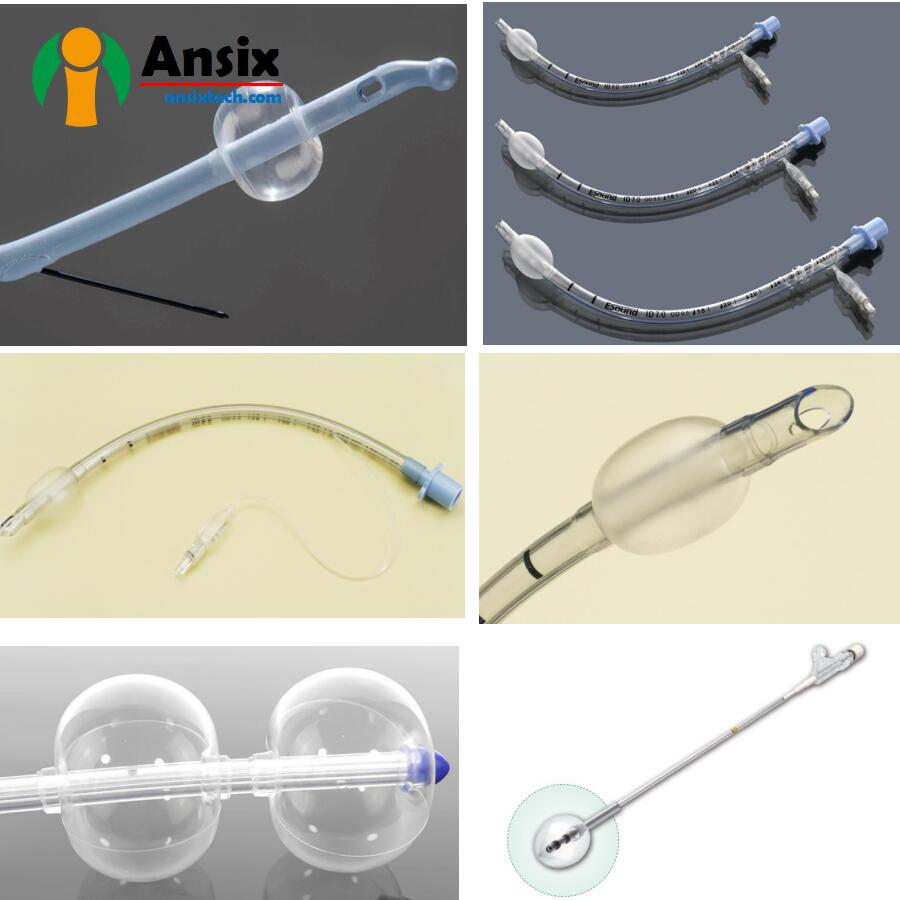
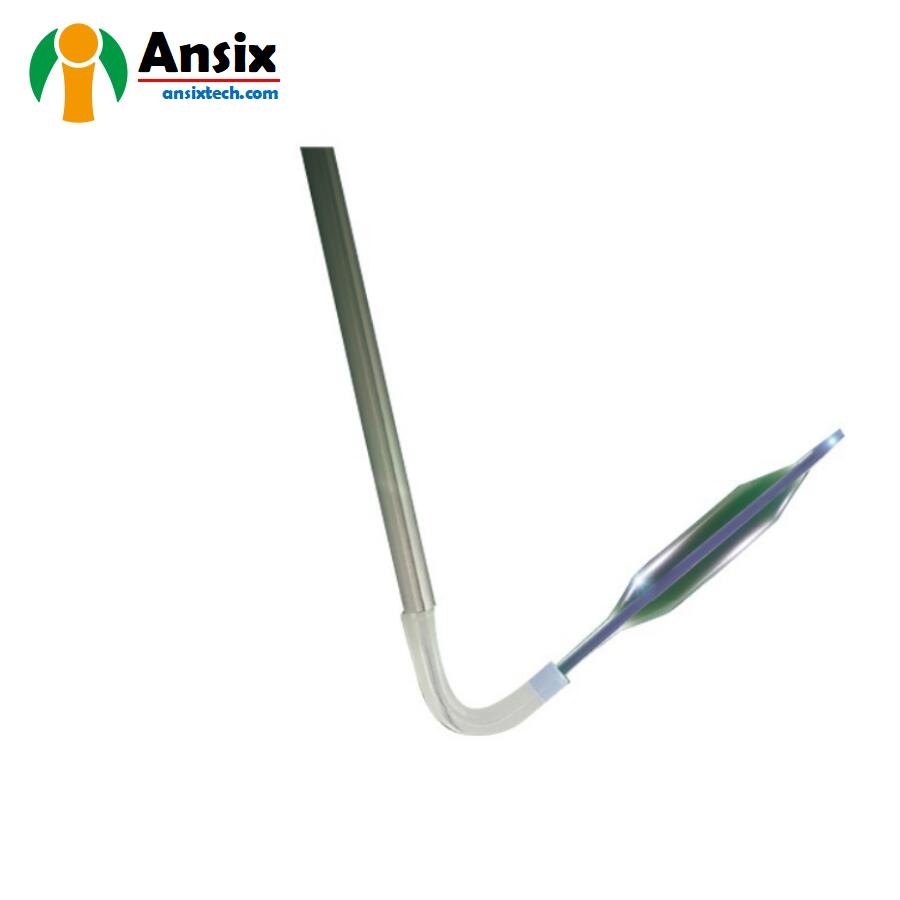
- Balloon Catheter Applications for AnsixTech
Balloon catheter extrusion by AnsixTech.Balloon catheters are widely used in the medical field. Here are some common application areas:Vascular interventional surgery: Balloon catheters are often used in vascular interventional surgery, such as vasodilation and stent implantation. By introducing a balloon catheter into a narrowed or blocked blood vessel and then inflating the balloon, the blood vessel can be dilated and blood flow restored.Cardiac interventional surgery: Balloon catheters can be used for cardiac interventional surgery, such as coronary artery dilation and atrial septal defect repair. By introducing a balloon catheter into the heart and then inflating the balloon, narrowed coronary arteries can be dilated or atrial septal defects repaired.Gastrointestinal treatment: Balloon catheters can be used for gastrointestinal treatment, such as esophageal dilation and gastrointestinal hemostasis. By introducing a balloon catheter into the digestive tract and then inflating the balloon, a narrowed esophagus can be dilated or a bleeding point in the gastrointestinal tract can be stopped.Biliary tract and pancreatic treatment: Balloon catheters can be used for biliary tract and pancreatic treatment, such as biliary dilation and pancreatic drainage. By introducing a balloon catheter into the biliary or pancreatic duct and then inflating the balloon, narrowed biliary tracts can be dilated or drainage channels cleared.Urinary tract treatment: Balloon catheters can be used for urinary tract treatment, such as urethral dilation and urethral catheterization. By introducing a balloon catheter into the urethra or urethra and then inflating the balloon, a narrow urethra can be dilated or a urethra can be fixed.Bleeding control: Balloon catheters can be used to stop bleeding and block bleeding points. By guiding a balloon catheter near the bleeding point and then inflating the balloon, bleeding can be effectively controlled.PTA & PTCA, Standard angioplasty, Stent delivery, Drug delivery/eluting, Cryoablation, RF ablation, Aneurism treatment, Thermal regulation, Cancer radiation treatment, Interventional Radiology, Embolic protection filtration, Emboli capture, Venous drainage, Kyphoplasty, Sinuplasty, Valvuloplasty, Heart valve replacement (TAVR & TMVR), Esophageal dilatation, Vascular closure, Respiratory ventilation, Renal, Occlusion, Structural heart, CoronaryBalloon catheters are widely used in many fields such as vascular interventional surgery, cardiac interventional surgery, gastrointestinal treatment, biliary tract and pancreatic treatment, urinary tract treatment, and bleeding control. Its expansion function and navigation make it a commonly used medical device, helping doctors achieve precise operations and treatments.



